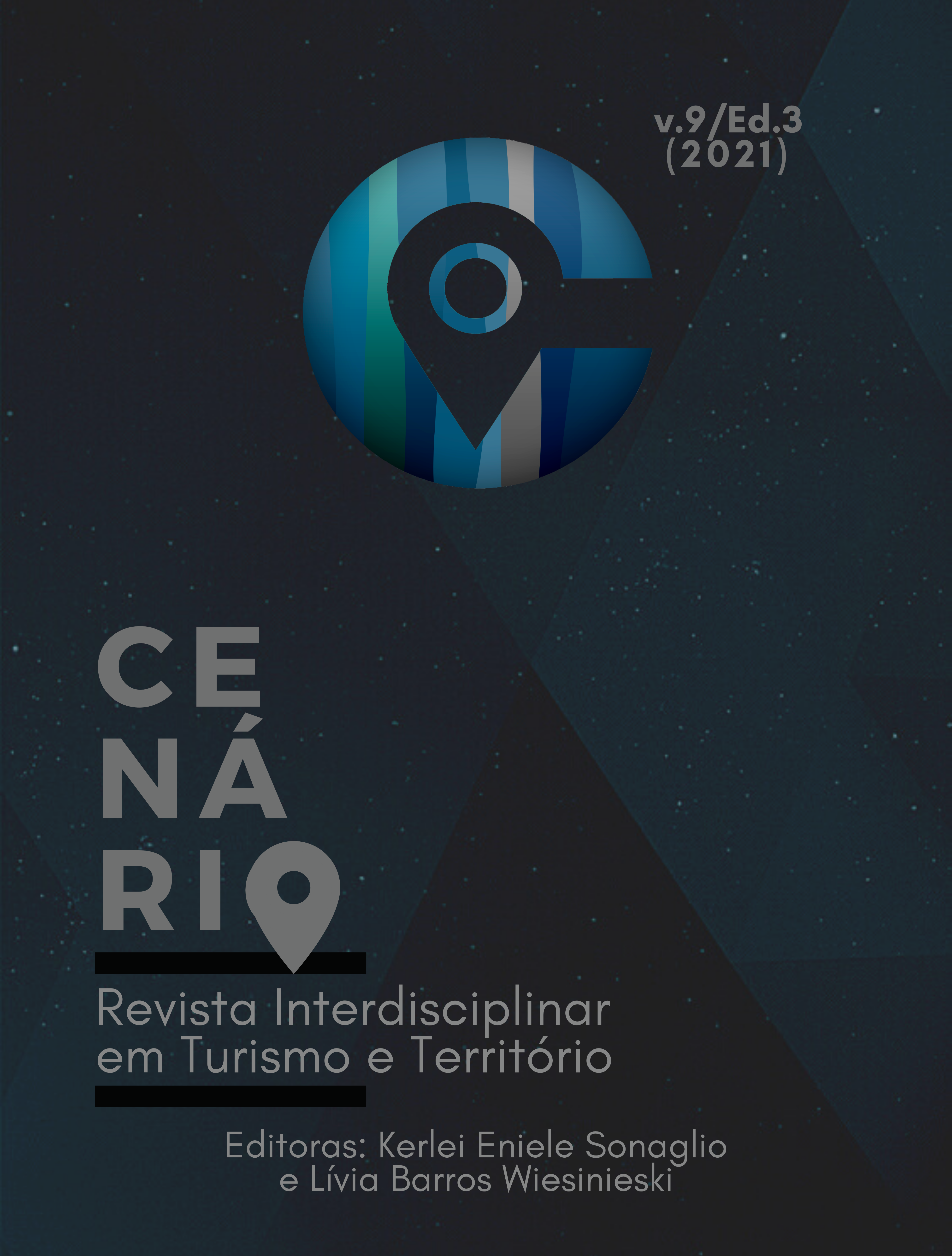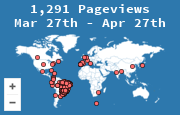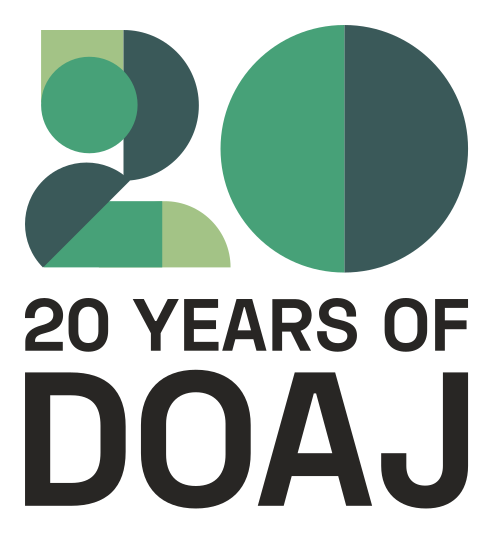Loyalty programs in the airline ticket market
development and opportunities for future research
DOI:
https://doi.org/10.26512/revistacenario.v9i3.35097Keywords:
Loyalty programs; Points program; Air miles; Consumer behavior in tourism; Tourism marketing.Abstract
This article aims to present loyalty programs and emerging trends. As it is a highly profitable market, with expiring points and an increasing number of participants, understanding the behavior of tourists in the decision-making process when redeeming or selling their points is a relevant topic for research on consumer behavior in tourism, since most part of the redemption of points remains for airline tickets. Thus, a bibliographic review was made in order to investigate the current status of the researches that study loyalty programs from the perspective of consumer behavior in tourism, both in Brazil and abroad. With the results obtained, the main study topics for future research are discussed, such as the impact of the emergence of new intermediaries and new technologies in the decision to sell / redeem points and how the consumer perceives this movement when making his decisions.
Downloads
References
ABEMF. Associação Brasileira das Empresas do Mercado de Fidelização (2020,10 de janeiro). Disponível em: https://www.abemf.com.br/.
Beck, J., Chapman, K., Palmantier, R.W. (2016) Understanding Relationship Marketing and Loyalty Program Effectiveness in Global Markets. Journal of International Marketing.
Breugelmans, Bijmolt, Zhang, Basso, Dorotic, Kopalle, Minnema, Mijnlieff e Wünderlich. (2014). Advancing research on loyalty programs: a future research agenda. Springer Science+Business Media New York.
Breugelmans; Liu-Thompkins. (2017).The effect of loyalty program expiration policy on consumer behavior. Springer Science+Business Media.
Bruneaua, V., Swaenb,V., Ziddac, P. (2018). Are Loyalty Program Members Really Engaged? Measuring Customer Engagement with Loyalty Programs. Journal of Business Research.
Chan,M., Kemp, S., Finsterwalder, J. (2016). The Concept Of Near Money In Loyalty Programmes. Journal Of Retailing And Consumer Services.
Chen,Yi-Fen; Chang, Shi-Han. (2015). The online framing effect: the moderating role of warning, brand familiarity, and product type. Springer Science+Business Media New York.
Drèze, X., Nunes, J. C. (2006). Your Loyalty Program Is Betraying You. Harvard Business Review, USA, p. 124-3.
Drèze, X., Nunes, J. C. (2004). Using Combined-Currency Prices to Lower Consumers' Perceived Cost. Journal of Marketing Research, 59 Vol. XLI, p. 59”“72.
Economia Comportamental. (2019, 15 de fevereiro). Disponível em: http://www.economiacomportamental.org.
E-commerce News: número de cadastros em programas de fidelidade ultrapassa os 115 milhões no primeiro tri. (2019, 08 de janeiro). Disponível em: https://ecommercenews.com.br/noticias/pesquisas-noticias/numero-de-cadastros-em-programas-de-fidelidade-ultrapassa-os-115-milhoes-no-primeiro-tri/.
Endeavor Brasil. (2019, 12 de maio). Max Oliveira, MaxMihas. Disponível em: https://endeavor.org.br/empreendedor/max-oliveira/.
Liu, Hsin-Hsien & Chou, Hsuan-Yi. (2016). Do Longer or Shorter Budget Temporal Frames Matter? Numerosity Effects, Mental Budgets, and Purchase Intentions, Journal of Marketing Theory and Practice, 24:4, 422-441.
Kahneman, D. (2012). Rápido e devagar: duas formas de pensar. 1ed. Rio de Janeiro. Ed. Objetiva.
Kang, J., Alejandro, T. B., Groza.(2014). Customer”“company identification and the effectiveness of loyalty programs. Journal of Business Research.
Lima, L., Steiner Neto, P. J. (2013). A Compreensão das Regras de Participação em Programas de Fidelidade. Revista Brasileira de Gestão de Negócios, São Paulo, v.15, n. 49, p.489 ”“ 503.
Lima, L. (2014). A percepção de valor dos programas de milhagem: um estudo exploratório. Revista Administração em Diálogo, Curitiba.
Liston-Heyes, Catherine. (2002) Pie in the Sky? Real Versus Perceived Values of Air Miles. Journal of Consumer Policy. Kluwer Academic Publishers, 25: 1”“26.
Liu, Y., & Yang, R. (2009). Competing loyalty programs: impact of market saturation, market share, and category expandability. Journal of Marketing, 73(1), 93”“108.
Maxmilhas. (2019, 15 de setembro). Disponível em: www.maxmilhas.com.br.
McCabe, S., Li, C., Chen, Z. (2016).Time for a Radical Reappraisal of Tourist Decision Making? Toward a New Conceptual Model. Journal of Travel Research.
Mimouni-Chaabane, A., Volle, P. (2010) Perceived benefits of loyalty programs: Scale development and implications for relational strategies. Journal of Business Research 63, p.32”“37.
Moreno, D., Lopes, E. (2018). Programas de fidelidade: fronteiras atuais e futuras direções. Desafio Online. Campo Grande, v.6, n.2.
Multiplus. Press Relase 3T2018. (2019, 05 de fevereiro). Disponível em: http://ri.pontosmultiplus.com.br/.
Palmeira, P., Pontes, N., Krishnan, D. (2016). Framing as status or benefits? Consumers’ reactions to hierarchical loyalty program communication. European Journal of Marketing, Vol. 50.
Purich, R.. (2019, 12 de fevereiro). História dos programas de fidelidade. Disponível em https://www.aquelapassagem.com.br/histria-dos-programas-de-fidelidade/.
Rocha, V., Ponchio, M., Francisco, E. (2015). Lealdade do consumidor e programas de fidelidade: uma análise topográfica à luz da bibliometria, da estatística e das redes sociais. Revista de Ciências e Administração, v.17, n. 41, p. 9-20.
Steinhoff, L., Palmatier, R.W. (2016).Understanding loyalty program effectiveness: managing target and bystander effects. Journal of the Academy of Marketing Science, 44(1), 88-107.
Stourm, V., Bradlow, E. T., & Fader, P. (2015). Stockpiling Points in Linear Loyalty Programs. Journal of Marketing Research.
Söderlund, M., Colliander, J. (2015). Loyalty Program Rewards and Their Impact on Perceived justice, Customer Satisfaction, and Repatronize Intentions. Journal of Retailing and Consumer Services.
Terblanche, N. S. (2015). Customers’ Perceived Benefits of a Frequent-Flyer Program. Routledge/ Journal of Travel & Tourism Marketing.
Wei, L., Xiao, J. (2013). Are Points Like Money? An Empirical Investigation of Reward Promotion Effectiveness for Multicategory Retailers. Springer Science+Business Media New York.
Downloads
Published
How to Cite
Issue
Section
License
Copyright (c) 2021 Cenário: Revista Interdisciplinar em Turismo e Território

This work is licensed under a Creative Commons Attribution-NonCommercial-NoDerivatives 4.0 International License.
1. Proposta de Política para Periódicos de Acesso Livre
Autores que publicam nesta revista concordam com os seguintes termos:
Autores mantém os direitos autorais e concedem a revista o direito de primeira publicação, sendo o trabalho simultaneamente licenciado sob a Creative Commons Attribution License o que permite o compartilhamento do trabalho com reconhecimento da autoria do trabalho e publicação inicial nesta revista.
A contribuição é original e inédita, e não está sendo avaliada para publicação por outra revista.
Autores cedem os direitos de autor do trabalho que ora apresentam a apreciação do Conselho Editorial da Revista Cenário, que poderá veicular o artigo na Revista Cenário e em bases de dados públicas e privadas, no Brasil e no exterior.
Autores declaram que são integralmente responsáveis pela totalidade do conteúdo da contribuição que ora submetem ao Conselho Editorial da Revista Cenário.
Autores declaram que não há conflito de interesse que possa interferir na imparcialidade dos trabalhos científico apresentados ao Conselho Editorial da Revista Cenário.
Autores têm autorização para assumir contratos adicionais separadamente, para distribuição não-exclusiva da versão do trabalho publicada nesta revista (ex.: publicar em repositório institucional ou como capítulo de livro), com reconhecimento de autoria e publicação inicial nesta revista.
Autores têm permissão e são estimulados a publicar e distribuir seu trabalho online (ex.: em repositórios institucionais ou na sua página pessoal) a qualquer ponto antes ou durante o processo editorial, já que isso pode gerar alterações produtivas, bem como aumentar o impacto e a citação do trabalho publicado.











